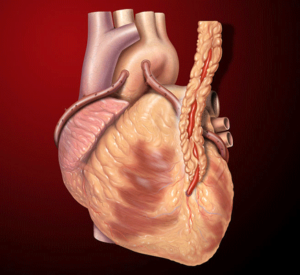
Cardiovascular surgery is a procedure used in treating circulatory system disorders. It can involve the venous and arterial systems, the heart and the lymphatic system.
Advances in cardiac surgery
Cardiac surgery is no longer the same as it was 70 years ago. It is constantly evolving and changing the lives of many people around the world, including those who have already suffered from a heart attack and who may undergo coronary bypass surgery.
Here, the surgeon performs vein grafts bypassing the obstructed zone of the heart’s arteries. This way, the heart can function back in excellent conditions because it receives oxygenated blood.
Coronary Artery Bypass Graft Surgery (CABG)
According to the American Heart Association, 427 000 CABG were performed in 2004 in the United States of America. This procedure consists of improving blood circulation to the muscle or heart system. Generally, it is known as coronary artery bypass grafting.
Generally, it is used to solve blood circulation problems caused by atherosclerosis in the coronary arteries. By improving blood supply, the surgery reduces chest pain and helps patients carry out the physical activities they could no longer perform.
In order to conduct this intervention, the surgeon either opts for percutaneous surgery or uses a segment of the blood vessel to create a bypass to go round the obstructed part of the coronary artery.
A segment of the blood vessel is removed elsewhere on the body (chest, leg, arm, etc.). Our medical team will stop the patient’s heart during the intervention and hold it in place by a heart-lung machine that will take over the breathing apparatus.
The segment of blood vessel collected will be fixed upstream and downstream of the clogged artery. Once the procedure is completed, the heart is restarted and blood flows towards it by going round the artery’s section and through the bypass.
HOW IS CORONARY ARTERY DISEASE DIAGNOSED?
The resting electrocardiogram (EKG) is a recording of the electrical activity of the heart, and can demonstrate signs of oxygen starvation of the heart (ischemia) or heart attack. Often, the resting EKG is normal in patients with coronary artery disease and angina. Exercise treadmill tests are useful screening tests for patients with a moderate likelihood of significant coronary artery disease (CAD) and a normal resting EKG. These stress tests are about 60 to 70% accurate in diagnosing significant CAD.
If the stress tests do not reveal the diagnosis, greater accuracy can be achieved by adding a nuclear agent (thallium or Cardiolite) intravenously during stress tests. Addition of thallium allows nuclear imaging of the blood flow to different regions of the heart, using an external camera. An area of the heart with reduced blood flow during exercise, but normal blood flow at rest, signifies significant artery narrowing in that region.
HOW IS CORONARY ARTERY DISEASE (CAD) TREATED?
Medicines used to treat angina reduce the heart muscle demand for oxygen in order to compensate for the reduced blood supply. Three commonly used classes of drugs are the nitrates, beta blockers and calcium blockers.
Nitroglycerin (Nitro-Bid) is an example of a nitrate. Examples of beta blockers include propranolol (Inderal) and atenolol (Tenormin). Examples of calcium blockers include nicardipine (Cardene) and nifedipine (Procardia, Adalat). Unstable angina is also treated with aspirin and the intravenous blood thinner heparin. Aspirin prevents clumping of platelets, while heparin prevents blood clotting on the surface of plaques in a critically narrowed artery.
When patients continue to have angina despite maximum medications, or when significant ischemia still occurs with exercise testing, coronary arteriography is usually indicated. Data collected during coronary arteriography help doctors decide whether the patient should be considered for percutaneous coronary intervention, or percutaneous transluminal angioplasty (PTCA), whereby a small balloon is used to inflate the blockage. Angioplasty (PTCA) is usually followed by placement of a stent or coronary artery bypass graft surgery (CABG) to increase coronary artery blood flow.
Angioplasty can produce excellent results in carefully selected patients. Under x-ray guidance, a wire is advanced from the groin to the coronary artery. A small catheter with a balloon at the end is threaded over the wire to reach the narrowed segment. The balloon is then inflated to push the artery open, and a steel mesh stent is generally inserted.
Heart surgery at any age
Heart surgery can be performed at any stage of life, and age should no longer be considered as a risk factor. The progress in medicine has put down these worries and the only real limits concern the general condition of patients and whether they smoke or not. This may or may not slow the healing process.
Coronary Artery Bypass Graft Surgery (CABG)

Representative scheme of the Coronary Artery Bypass Graft Surgery